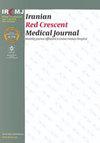Challenges of Implementation of Insurance Coverage Program for Infertility Services in Iran
IF 0.2
4区 医学
Q3 MEDICINE, GENERAL & INTERNAL
引用次数: 0
Abstract
Background: Population has long been known as the most important pillar of governments and societies. However, in recent years, the rate of infertility is increasing rapidly due to various reasons. Objectives: This study aimed to identify the factors and challenges affecting the implementation of insurance coverage program for infertility services in Iran for the policymakers and implementers of the program. Accordingly, the correct implementation of this program provides the possibility for infertile couples to benefit from the services of this program. Methods: This qualitative study was conducted in 2022. Purposive sampling was used for selecting a total of 20 Iranian scientific and executive experts of health system with work experience, especially in the field of infertility. The interviews were conducted in a semi-structured manner and analyzed using the content analysis method and MAXQDA 2020 software. Results: The results showed that the challenges of this program include 6 main themes along with 39 sub-themes. The main themes are challenges of upstream laws and legal requirements; provision of health services; human resources; the service package and its pricing; financial issues, budgets, and methods of service cost reimbursement; and information technology challenges. Conclusion: Although the service package is defined and announced, the implementation of this plan faces many challenges due to not taking into account the implementation conditions and requirements. By examining the problems of infertility insurance coverage, the present study provides a comprehensive and practical picture of these problems. Accordingly, the factors that can make the program successful in the future consist of inclusion of a part of the services related to infertility treatment in the package of insurance services, the awareness of managers and policy makers about the challenges of implementing this program, providing financial, electronic, and human resources needed by the program, and development and modification of standards of the program.伊朗实施不孕不育服务保险计划面临的挑战
背景:长期以来,人口一直被认为是政府和社会最重要的支柱。然而,近年来,由于各种原因,不孕不育率正在迅速上升。目的:本研究旨在为伊朗不孕不育服务保险计划的决策者和实施者确定影响该计划实施的因素和挑战。因此,该计划的正确实施为不孕夫妇提供了受益于该计划服务的可能性。方法:本研究于2022年进行。采用目的性抽样方法,选择了20名具有工作经验的伊朗卫生系统科学和执行专家,特别是在不孕不育领域。访谈以半结构化的方式进行,并使用内容分析方法和MAXQDA 2020软件进行分析。结果:研究结果表明,该项目的挑战包括6个主主题和39个子主题。主要主题是上游法律和法律要求的挑战;提供保健服务;人力资源服务包及其定价;财务问题、预算和服务费用报销方法;以及信息技术挑战。结论:尽管服务包已经确定并公布,但由于没有考虑到实施条件和要求,该计划的实施面临许多挑战。通过调查不孕不育保险的问题,本研究对这些问题提供了一个全面而实际的了解。因此,使该计划在未来取得成功的因素包括将不孕不育治疗相关的部分服务纳入一揽子保险服务,管理人员和决策者对实施该计划的挑战的认识,提供该计划所需的财务、电子和人力资源,以及程序标准的制定和修改。
本文章由计算机程序翻译,如有差异,请以英文原文为准。
求助全文
约1分钟内获得全文
求助全文
来源期刊

Iranian Red Crescent Medical Journal
MEDICINE, GENERAL & INTERNAL-
CiteScore
1.16
自引率
0.00%
发文量
0
期刊介绍:
The IRANIAN RED CRESCENT MEDICAL JOURNAL is an international, English language, peer-reviewed journal dealing with general Medicine and Surgery, Disaster Medicine and Health Policy. It is an official Journal of the Iranian Hospital Dubai and is published monthly. The Iranian Red Crescent Medical Journal aims at publishing the high quality materials, both clinical and scientific, on all aspects of Medicine and Surgery
 求助内容:
求助内容: 应助结果提醒方式:
应助结果提醒方式:


